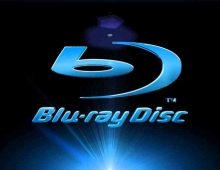
Industry Concerned Over Royalties for Upcoming Formats
With the next-generation DVD formats close to launch and patent licensing terms not fully determined yet, blue-laser technology royalties are expected to be a debated issue.
The issue of royalties is the main reason that there are two competing formats with no compromise for a single High Definition standard. Every corporation wants to collect fees with their respective technology.
So far, both Blu-ray and HD DVD camps have not officially revealed the patent licensing terms and refuse to divulge any amounts regarding royalties.
The HD DVD camp is still in the process of reviewing license terms and conditions that are yet to be determined. On the Blu-ray side, MPEG LA is coordinating applications from patent holders but has not been formally appointed as the patent administrator for the BD format. The Blu-ray Disc Association's policy is not to comment publicly on specific royalty amounts.
The major problem for disc replicators is that the production has already started and the new blue HD formats will be launched very soon. Yet, no standard cost of entry has been officially revealed.
We can logically deduct though that patent holders will ensure that the BD royalties are competitive with the HD DVD ones and vice versa.
When taking into consideration the advanced blue-laser technology that is involved in next-generation media, one can assume that royalties will be high for HD DVD and even higher for Blu-ray.
Royalties on a current DVD for instance, are already complex enough and yet, for the HD technology more patent holders will add to the existing ones.
On a current DVD, the cost of entry is being split between more than a dozen 'technology owners', including the DVD Format/Logo Licensing Corporation, Dolby, Macrovision, DVI Promoters, HDMI Licensing, Digital Content Protection LLC (HDCP), MPEG LA LLC, Nissim Corporation, Koninklijke Philips Electronics NV (DVD3C) and Toshiba Corporation for the DVD6C Patent Licensing Group.
Future next-generation format producers will have to pay for most of the above and decide which of the video and audio formats they want to license. Furthermore, they will have to chose between Java or iHD, subscribe to a copy management system, make retention against future royalty liabilities and more undefined terms will add.
The hidden cost of licensing will seem worst for the smaller, independent replicators. They will struggle to compete against a multinational corporation that possibly owns some of the content and controls some of the patent licenses that apply to HD technology.
Furthermore, most content owners don't want the anti-piracy technology to be available to smaller replicators because they are afraid it may find its way to the public. This fiasco was seen with the CSS protection scheme for DVDs. When it was firstly licensable, companies had to go through strict inspection and restrict access to certain employees. Yet, the CSS key was leaked, with unwanted consequences for the music and movie industry.
Industry sources claim that the financial requirements regarding copyright protection will be huge and unreasonable in the interest of movie studios.
Questions remain to be answered: With additional royalty fees, higher costs for blank media manufacturers and replicators and consequently, for the end user when will blue-laser technology suppress the red-laser one and how successful will it be?
So far, both Blu-ray and HD DVD camps have not officially revealed the patent licensing terms and refuse to divulge any amounts regarding royalties.
The HD DVD camp is still in the process of reviewing license terms and conditions that are yet to be determined. On the Blu-ray side, MPEG LA is coordinating applications from patent holders but has not been formally appointed as the patent administrator for the BD format. The Blu-ray Disc Association's policy is not to comment publicly on specific royalty amounts.
The major problem for disc replicators is that the production has already started and the new blue HD formats will be launched very soon. Yet, no standard cost of entry has been officially revealed.
We can logically deduct though that patent holders will ensure that the BD royalties are competitive with the HD DVD ones and vice versa.
When taking into consideration the advanced blue-laser technology that is involved in next-generation media, one can assume that royalties will be high for HD DVD and even higher for Blu-ray.
Royalties on a current DVD for instance, are already complex enough and yet, for the HD technology more patent holders will add to the existing ones.
On a current DVD, the cost of entry is being split between more than a dozen 'technology owners', including the DVD Format/Logo Licensing Corporation, Dolby, Macrovision, DVI Promoters, HDMI Licensing, Digital Content Protection LLC (HDCP), MPEG LA LLC, Nissim Corporation, Koninklijke Philips Electronics NV (DVD3C) and Toshiba Corporation for the DVD6C Patent Licensing Group.
Future next-generation format producers will have to pay for most of the above and decide which of the video and audio formats they want to license. Furthermore, they will have to chose between Java or iHD, subscribe to a copy management system, make retention against future royalty liabilities and more undefined terms will add.
The hidden cost of licensing will seem worst for the smaller, independent replicators. They will struggle to compete against a multinational corporation that possibly owns some of the content and controls some of the patent licenses that apply to HD technology.
Furthermore, most content owners don't want the anti-piracy technology to be available to smaller replicators because they are afraid it may find its way to the public. This fiasco was seen with the CSS protection scheme for DVDs. When it was firstly licensable, companies had to go through strict inspection and restrict access to certain employees. Yet, the CSS key was leaked, with unwanted consequences for the music and movie industry.
Industry sources claim that the financial requirements regarding copyright protection will be huge and unreasonable in the interest of movie studios.
Questions remain to be answered: With additional royalty fees, higher costs for blank media manufacturers and replicators and consequently, for the end user when will blue-laser technology suppress the red-laser one and how successful will it be?





















